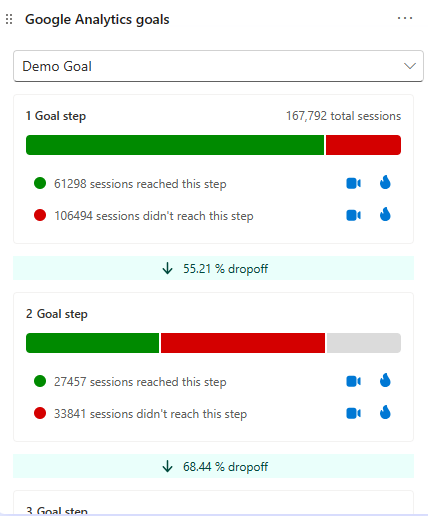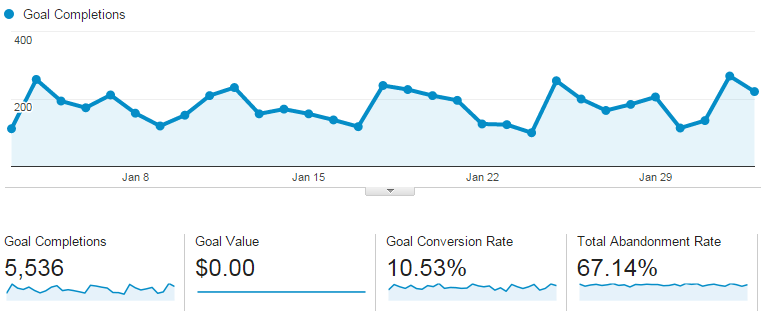Key Insights on What Data Is Google Analytics Goals Unable to Track
Wiki Article
Discover the Limitations of Google Analytics Goals: Introducing the Information Types That Remain Untrackable
As organizations progressively rely upon data-driven decision-making, comprehending the limitations of devices like Google Analytics ends up being vital. While Google Analytics Goals deal beneficial understandings into individual communications, there exist data types that thwart monitoring, posturing obstacles to an extensive understanding of user behavior. These untrackable data kinds question regarding the accuracy and efficiency of the analytics data that companies greatly trust for their electronic strategies. Curious to discover the surprise dead spots in your information analysis process?Insufficient Customer Trip Tracking
Insufficient individual trip monitoring within Google Analytics can hinder the capability to precisely assess user actions. When the customer journey is not totally tracked, there are spaces in the information that avoid a comprehensive understanding of just how individuals engage with a site. This absence of insight can bring about missed possibilities for optimization and renovations to the user experience.One typical problem with incomplete customer journey monitoring is the inability to see the complete course that customers take in the past finishing an objective or leaving the website. Without this information, it is testing to recognize where customers might be encountering obstacles or rubbing factors that avoid them from converting. Additionally, incomplete monitoring can cover the influence of particular advertising efforts or site adjustments on individual behavior.
To address this restriction, it is important to establish up appropriate monitoring systems within Google Analytics to record the whole customer journey. This may include establishing up event monitoring, goal funnels, or making use of devices like Google Tag Supervisor to make sure that no important interactions go unrecorded. By obtaining a thorough view of the customer journey, website owners can make even more educated decisions to improve user involvement and drive conversions.
Acknowledgment Difficulties
Navigating through attribution challenges in Google Analytics needs an extensive understanding of exactly how different touchpoints add to the general conversion process. Acknowledgment obstacles develop from the intricacy of modern customer trips, where individuals connect with numerous networks before converting.One usual attribution challenge is the problem in associating conversions to the correct source, particularly in cases where individuals connect with multiple channels before converting. Furthermore, cross-device tracking positions another acknowledgment difficulty, as customers typically switch over in between tools during their trip, making it challenging to track their interactions seamlessly.
Offline Conversions
Given the difficulties connected with associating conversions accurately in online networks, the measurement of offline conversions provides a significant possibility for online marketers seeking a much more thorough understanding of their clients' journey. Offline conversions describe actions that customers absorb the physical world, such as making purchases in brick-and-mortar stores or over the phone, attending occasions, or engaging with printed products - what data is google analytics goals unable to track. These conversions are important for organizations that operate both online and offline, as they supply useful insights right into the performance of marketing campaigns throughout various touchpointsTracking offline conversions typically posed a considerable obstacle for marketing professionals, as it was testing to link these actions back to details on the go now internet communications accurately. With advancements in innovation, such as the assimilation of CRM systems, distinct identifiers, and voucher codes, services can currently bridge the void between online and offline data to gain a more alternative view of client actions. By effectively measuring offline conversions, online marketers can optimize their strategies, allocate resources a lot more successfully, and eventually boost the general customer experience.
Cross-Device Monitoring
Cross-device tracking plays a crucial role in understanding the interconnected nature of consumers' electronic interactions throughout several tools. In today's omnichannel globe, where users seamlessly switch between desktops, tablets, and smartphones, tracking their habits across these devices is necessary for online marketers to gain a thorough sight of their client journey.
In addition, personal privacy worries and policies such as GDPR and CCPA have even more complicated cross-device tracking. With users demanding even more control over their data and enhanced limitations on tracking modern technologies, online marketers need to discover ingenious and privacy-compliant ways to connect customer communications across devices.
Dynamic Content Engagement
Recognizing individual involvement with dynamic web content is essential in maximizing digital advertising and marketing strategies for improved audience interaction. Dynamic web content refers to web site components that change based on customer behavior, preferences, or other aspects, using a personalized experience. Tracking customer communications with vibrant content postures difficulties for standard analytics devices like Google Analytics.While Google Analytics can track basic communications like clicks and page views, it might have a hard time to capture more nuanced involvements within dynamic content. what data is google analytics goals unable to track. Metrics such as time invested on specific dynamic elements, hover activities, or communications within pop-ups are typically not easily measurable making use web link of typical tracking methods. This constraint impedes marketing experts' ability to completely realize exactly how customers are involving with vibrant web content and tailor their methods appropriately

Verdict
In final thought, Google Analytics goals have limitations in tracking incomplete customer trips, associating conversions properly, catching offline conversions, tracking cross-device communications, and measuring dynamic material involvement. These constraints highlight the significance of checking out additional tracking approaches and devices to acquire an extra comprehensive understanding of individual actions and conversions past what Google Analytics can supply.While Google Analytics Goals offer beneficial insights right into customer communications, there exist data types that elude tracking, posing obstacles to a comprehensive understanding of user behavior.Insufficient individual trip monitoring within Google Analytics can impede the capacity to accurately evaluate user actions. When the individual journey is not completely tracked, there are voids in the information that prevent a comprehensive understanding of just how customers interact with a web site.One typical issue with insufficient user trip monitoring is the see this website inability to see the complete path that individuals take before completing an objective or leaving the website. By acquiring a detailed view of the individual journey, website proprietors can make even more informed decisions to boost user engagement and drive conversions.
Report this wiki page